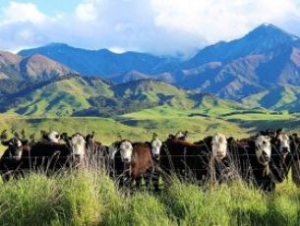Dairy in the World
New Zealand's Beef Cattle Herd Up Despite Trying Season

Beef + Lamb New Zealand’s latest stock number survey shows that the 2015–16 year has been an exceptionally trying farming season, with facial eczema in the North Island and widespread climatic challenges in other parts of the country – particularly North Canterbury.
Facial eczema is a fungal disease spread by fungal spores growing on pasture, which causes lowered production, skin irritation and peeling and sometimes death.
Beef + Lamb New Zealand Chief Operating Officer, Cros Spooner, says the 2.8 per cent increase in beef cattle numbers follows a 3.3 per cent decline in the 2014–15 season.
The largest contributor to the increase in cattle numbers was a lift in weaner cattle across many regions, up 8.2 per cent as farmers responded to good returns. The exception to the increased weaner numbers trend was on the East Coast of the North Island, which experienced dry weather conditions, Mr Spooner said.
“There was a continuing decline in the beef breeding herd, down by 1.6 per cent, and this reflects the trend to more flexible cattle systems.
"This reinforces the need for better integration with the dairy industry – particularly with genetics, which is a key area of focus for Beef + Lamb New Zealand."
TheCattleSite News Desk






















